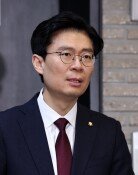How will a low birth rate and aging population affect Korea?
How will a low birth rate and aging population affect Korea?
Posted June. 23, 2012 10:49,
Koreas population will surpass 50 million Saturday, a development with a variety of implications given that the country aims to join the ranks of advanced economies.
The country ranks 26th in the world in population, but is one of seven countries with per capita income exceeding 20,000 U.S. dollars and a population of more than 50 million. The other six countries are the U.S. Japan, France, Italy, Germany and Britain.
The problem is that Koreas future does not look bright due to a low birth rate. The total fertility rate was 1.23 in 2010), the lowest in the world, and if this continues, experts say, the countrys potential growth rate will fall to 1 percent in the early 2030s.
The rapidly aging population will force the younger generation to support more elderly people and cause an influx of foreign workers due to lack of labor supply. Expert says such changes will fundamentally shake the decades-long fabric of Korean society.
- Worlds lowest birth rate, oldest population
As recently as 30 years ago, the biggest task of the Korean government was birth control. Under the slogan `Raise well by having two children`, the government gave priority to couples with one child in buying apartments at the time. By contrast, those with more than three children had to pay heavy residential taxes and could not buy health insurance. In hindsight, however, this birth control policy proved to be shortsighted.
In 1983, the total fertility rate fell below 2.1, which is required to maintain a population. The figure continued to drop to 1.23 in 2010 after hitting a record low of 1.8 in 2005.
Due to the growing number of economically active women and late marriages, the birth rate of women in their late 20s fell from 238.5 to 145 babies per 1,000 people. By contrast, the number of those at the age of 65 or over is steadily growing.
In 1980, the number of senior citizens came in at 1.45 million but jumped to 5.45 million in 2010. The figure will further soar to 16.5 million in 2060. The number of elderly people per 100 economically active people is expected to be 57.2, second only to Japan`s 63.3.
- Country of the elderly
A decline in the number of economically active people aged between 15 and 64 means a drop in a countrys economic vitality. In a world economic outlook report, the Organization for Economic Cooperation and Development said Korea`s potential growth will fall to an annual rate of 1 percent, the lowest among the organizations 34 member countries. The forecast means that growth will be less than a third of the current rate in two decades.
OECD Secretary-General Angel Gurría said, "With the economically active population falling due to a low birth rate and aging population, Koreas potential growth rate is continuously decreasing."
The share of Koreas economically active people in the population peaked in 2015 at 73 percent, but will drop to 63.1 percent in 2030 and 52.7 percent in 2050.
The government has begun offering free childcare for those aged 2 or under and those age 5 to boost the birth rate. Experts say, however, that this is not enough to encourage more births.
According to the OECD, Korea`s ratio of expenses for child and family welfare to GDP is 0.5 percent, a fourth of the OECD average (2 percent). Even if the fiscal burden stemming from a rapid rise in welfare costs is considered, government incentives will not be enough to boost childbirth.
Koo Seong-ryul, an economics professor at Yonsei University, said, "The countrys birth rate, which is two thirds those of advanced countries, cannot sustain the Korean economy down the road, adding "Along with multifaceted measures to support child rearing, the country should brace for a drop in the economically active population by encouraging women and the elderly to join economic activities."
january@donga.com







